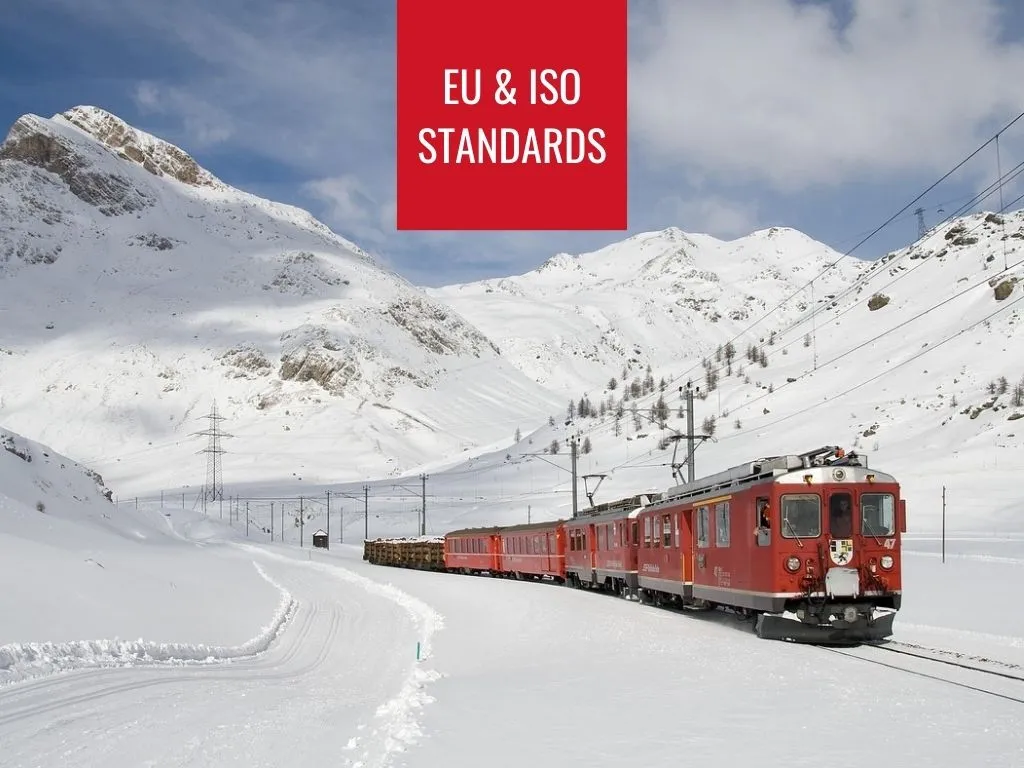Sealing profiles play a crucial role in industries where safety, durability, and compliance are non-negotiable. Railway and marine environments are especially demanding. Seals must endure vibration, movement, changing weather conditions, and exposure to chemicals or saltwater, all while meeting strict international regulations. Understanding the main EU and ISO standards that apply to these applications helps decision-makers choose sealing solutions that are both reliable and compliant.
Why Standards Matter in Sealing Solutions
In regulated industries, it is not enough for a seal to simply perform well in practice. Authorities, manufacturers, and operators require documented compliance with recognized standards. This ensures that the materials, design, and testing methods meet a common benchmark for quality and safety. For customers, working with a supplier that understands these requirements provides peace of mind and reduces risks during inspections, audits, and certifications.
Railway Applications and Relevant Standards
Railway environments subject seals to constant vibration, fluctuating temperatures, and exposure to cleaning chemicals. Profiles must maintain performance over long service lives while supporting passenger safety and comfort.
The most important framework is the EN 45545 series, which specifies fire safety requirements for railway applications. For sealing profiles, this means using materials with proven fire resistance and low smoke and toxicity in case of fire. Compliance with EN 45545 is mandatory for rail vehicles operating in the European Union.
In addition to fire safety, standards such as EN 61373 (shock and vibration testing) influence the design and testing of profiles. Seals must withstand mechanical stresses without losing elasticity or sealing capability. Noise and vibration reduction are also part of railway comfort requirements, so seals are often expected to contribute to a quieter and more stable travel environment.
Marine Applications and Relevant Standards
The marine industry presents its own set of challenges. Saltwater, UV exposure, humidity, and fluctuating temperatures accelerate material wear. Safety is also paramount, especially on passenger vessels or offshore platforms.
Standards such as the IMO Fire Test Procedures Code (FTP Code) define fire safety criteria for marine equipment. Sealing profiles used in doors, windows, and bulkheads must pass flame spread and smoke emission tests. Many ship classification societies, including DNV and Lloyd’s Register, require documented compliance before approving materials for use.
Environmental resistance is another key factor. Marine seals often need certification for resistance to ozone, UV light, and salt spray. By meeting these standards, profiles ensure long-term durability in one of the harshest operational environments.
ISO Standards for Materials and Testing
Alongside sector-specific requirements, a range of ISO standards guide material testing and performance evaluation. For example:
- ISO 37 covers the determination of tensile stress and strain in rubber materials, a key measure of elasticity.
- ISO 815 defines how to test compression set, which shows how well a seal retains its shape after being compressed.
- ISO 48 describes hardness testing, ensuring that materials meet design specifications.
These tests provide reliable data on how seals will perform under real-world conditions. When manufacturers follow ISO testing methods, customers can trust that the results are accurate and comparable across different suppliers.
The Role of Compliance in Design and Procurement
Compliance is not only about passing tests at the end of production. It starts with material selection, continues through extrusion design, and extends to the final installation in the field. By considering standards early in the design phase, companies can avoid costly redesigns and delays. For procurement teams, documented compliance simplifies supplier selection and reduces the risk of non-conformity in later inspections.
Conclusion: Standards as a Foundation for Reliability
In the railway and marine industries, sealing profiles must do more than simply provide a tight fit. They need to perform consistently under harsh conditions and prove compliance with strict EU and ISO standards. Fire safety, mechanical resistance, and environmental durability are all part of the requirements.
Choosing a sealing partner who understands and applies these standards ensures that every profile contributes to the overall safety and efficiency of the system. At V.A.V. Group, we help our customers navigate the complexity of compliance by providing seals that meet industry regulations without compromising on performance. If you need sealing solutions that combine reliability with proven certification, our team is ready to support your next project.











